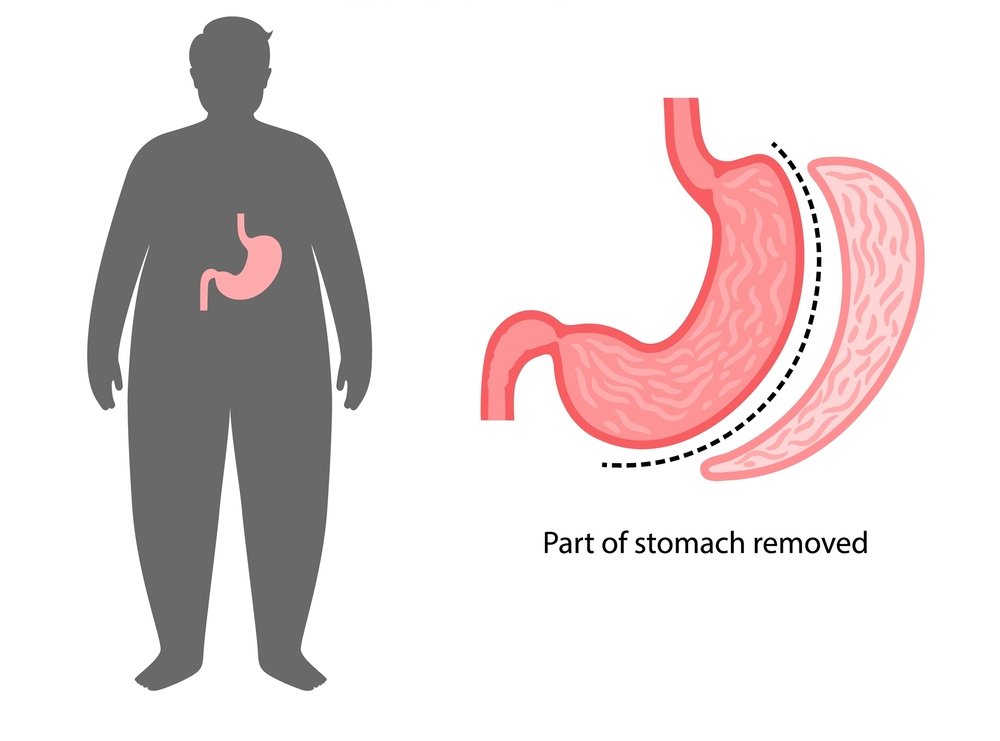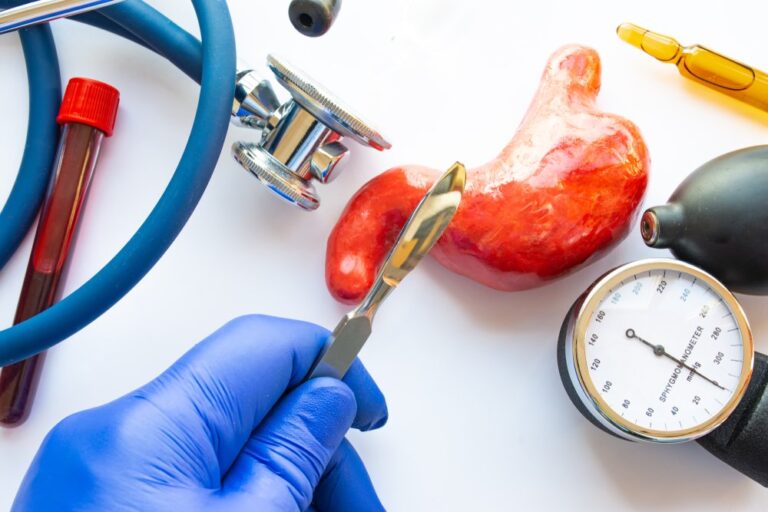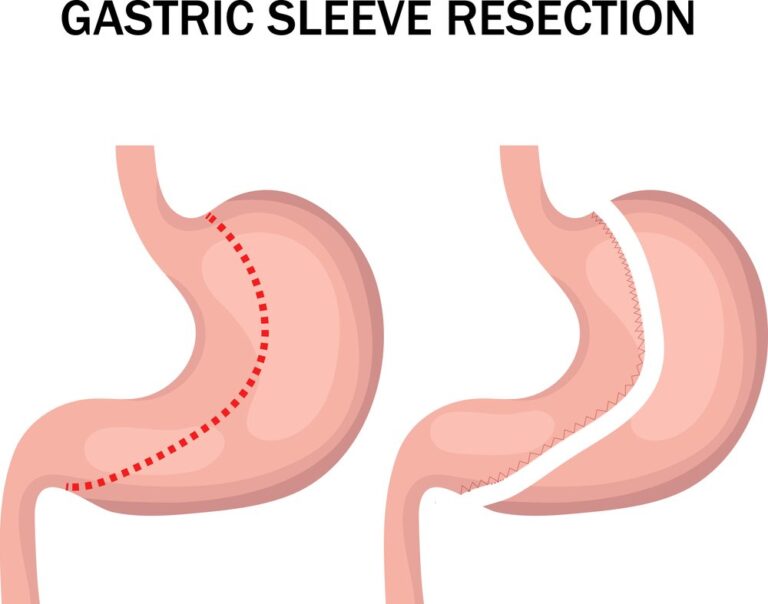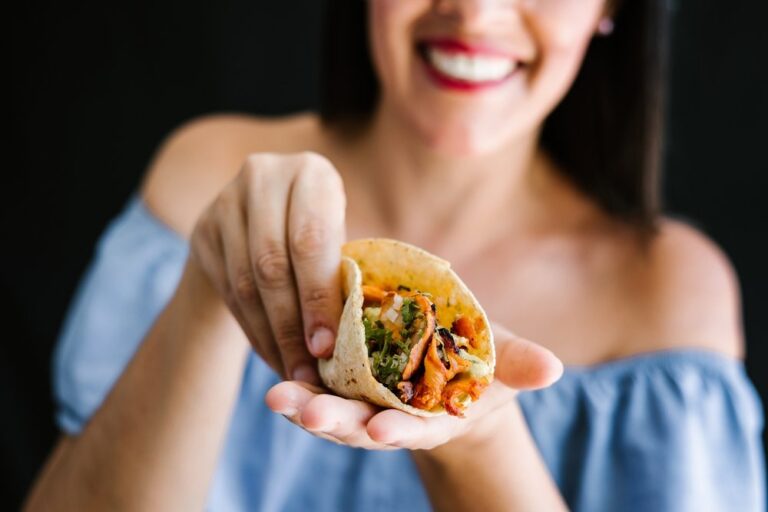After undergoing gastric sleeve surgery, it’s crucial to understand the causes of foamies, a potential complication during vomiting episodes. “What causes foamies after gastric sleeve” is a common question. Foamies, characterized by the regurgitation of frothy vomit, can be caused by factors such as rapid eating and large food portions. To minimize foamies, follow your healthcare team’s dietary guidelines carefully. Learn more about foamies after gastric sleeve and their prevention strategies.
Get a $1000 Off on Gastric Sleeve in Miami
What are “Foamies” and How Do They Relate to Gastric Sleeve Surgery?
“Foamies” is a term used to describe a specific symptom that some individuals may experience after undergoing gastric sleeve surgery. It refers to the regurgitation of frothy or foamy vomit during episodes of vomiting. Foamies are believed to be caused by a combination of factors related to the surgery and the changes it brings to the digestive system.
Gastric sleeve surgery involves the removal of a portion of the stomach, leaving a smaller, tubular-shaped pouch. This alteration in the anatomy can affect the way food and liquids are processed and digested. Foamies may occur due to the following reasons:
- Rapid eating: Eating too quickly or not chewing food thoroughly can introduce excess air into the stomach, which may result in foaminess during vomiting.
- Portion size: Consuming larger food portions than the reduced stomach capacity can handle may lead to foamies when the stomach attempts to expel the excess.
- Food choices: Certain foods, such as carbonated beverages, greasy or fatty foods, and hard-to-digest items, can create foaminess when vomited.
It’s important to note that foamies are not considered a normal or desired outcome after gastric sleeve surgery. If you experience persistent foamies or have concerns about this symptom, it’s recommended to consult with your healthcare provider. They can evaluate your specific situation, provide guidance on dietary modifications, and address any potential underlying.
Prevalence and Frequency of Foamies in Post-Surgery Patients
The prevalence and frequency of foamies in post-surgery patients can vary among individuals. While foamies are a potential complication after gastric sleeve surgery, it’s important to note that not all patients will experience this symptom. The occurrence of foamies may depend on factors such as eating habits, portion control, and individual sensitivity to certain foods.

The frequency of foamies can also vary. Some patients may experience foamies occasionally, while others may encounter this symptom more frequently. It’s crucial to pay attention to your eating behaviors, follow the recommended dietary guidelines provided by your healthcare team, and make adjustments as needed to minimize the occurrence of foamies.
If you are experiencing frequent or bothersome foamies, it’s advisable to consult with your healthcare provider. They can assess your specific situation, offer personalized advice, and address any concerns or underlying issues that may be contributing to this symptom.
Recognizing the Symptoms of Foamies
Foamies, also known as foam or frothy vomit, can be recognized by specific symptoms. Here are some common signs to watch for:
- Appearance: Foamies are characterized by the presence of frothy or foamy texture in vomit. The vomit may have a bubbly or airy consistency, resembling foam.
- Texture: Foamies have a lighter and less dense consistency compared to regular vomit. They may appear airy, fluffy, or bubbly in nature.
- Color: Foamies can vary in color, typically reflecting the contents of the stomach. The foam may be clear, white, yellow, or have other colors depending on the ingested food or liquids.
- Accompanying symptoms: Foamies are often associated with other symptoms of vomiting, such as nausea, abdominal discomfort, and the expulsion of stomach contents through the mouth.
If you experience these symptoms and notice the presence of foam or frothy vomit, it’s important to discuss them with your healthcare provider. They can evaluate your specific situation, determine the underlying cause of the foamies, and provide appropriate guidance and treatment if needed.
Factors Contributing to Foamies
Foamies, or the regurgitation of frothy vomit, can be attributed to several factors. Here are some common contributors to foamies:
| Factors |
|---|
| Eating too quickly |
| Large food portions |
| Consumption of carbonated beverages |
| High-fat or greasy foods |
| Hard-to-digest foods |
| Eating too soon after meals |
Being mindful of these factors and making appropriate adjustments to your eating habits and food choices can help minimize the occurrence of foamies.
Inadequate Chewing and Food Texture
Inadequate chewing and food texture can also contribute to foamies after gastric sleeve surgery. Here’s how they can impact the occurrence of foamies:
- Inadequate chewing: Insufficiently chewing your food before swallowing can result in larger food particles reaching the stomach. These larger particles can be more difficult to digest and may contribute to foaminess during vomiting.
- Food texture: Certain food textures, such as dry or sticky foods, may not break down easily in the stomach. When these foods are regurgitated, they can contribute to the formation of foam.

To help minimize foamies related to inadequate chewing and food texture:
- Take your time while eating and make sure to chew each bite thoroughly.
- Avoid consuming foods that are dry, sticky, or have challenging textures.
- If necessary, modify the texture of foods by pureeing or blending them to ensure easier digestion.
By being mindful of your chewing habits and selecting appropriate food textures, you can reduce the likelihood of foamies after gastric sleeve surgery. If foamies persist or become a concern, consult with your healthcare provider for further evaluation and guidance.
Eating and Drinking Simultaneously
Eating and drinking simultaneously can be a contributing factor to foamies after gastric sleeve surgery. Here’s how it can affect the occurrence of foamies:
- Air swallowing: When you eat and drink at the same time, it increases the chances of swallowing air along with the food and liquids. This can lead to excess air in the stomach, which may contribute to foaminess during vomiting.
- Dilution of stomach acid: Drinking fluids while eating can dilute the stomach acid, which is essential for proper digestion. Inadequate stomach acid may affect the breakdown of food, potentially leading to foaminess when regurgitated.
To help minimize foamies related to eating and drinking simultaneously:
- Practice mindful eating: Focus on eating your food without distractions, such as watching TV or using electronic devices. This can help you become more aware of your eating habits and prevent mindless consumption.
- Separate eating and drinking: Avoid drinking fluids during meals and instead have them at least 30 minutes before or after eating. This can help maintain proper stomach acid concentration and reduce the likelihood of foamies.
By being mindful of your eating and drinking habits, and allowing proper time for digestion, you can help minimize the occurrence of foamies after gastric sleeve surgery. If foamies persist or become a concern, consult with your healthcare provider for further evaluation and guidance.
Insufficient Time for Gastric Emptying
Insufficient time for gastric emptying, or the process of food leaving the stomach and entering the small intestine, can contribute to foamies after gastric sleeve surgery. Here’s how it can impact the occurrence of foamies:
- Rapid eating: Consuming food too quickly can overwhelm the stomach’s capacity and hinder proper gastric emptying. This can result in food and liquid being regurgitated, potentially leading to foaminess.
- Large food portions: Eating larger food portions than the reduced stomach can comfortably accommodate can delay gastric emptying. When the stomach becomes too full, the contents may be expelled, potentially causing foamies.
To help prevent foamies related to insufficient time for gastric emptying:
- Eat slowly: Take your time and savor each bite, allowing your stomach ample time to process and empty the food.
- Chew thoroughly: Ensure that you chew your food thoroughly before swallowing. Properly chewed food is easier for the stomach to digest and promotes more efficient gastric emptying.
- Mind portion sizes: Be mindful of portion control and eat smaller, more frequent meals throughout the day. This can help prevent overloading the stomach and aid in proper digestion and emptying.
By adopting these practices and giving your stomach sufficient time for gastric emptying, you can reduce the likelihood of foamies after gastric sleeve surgery.
Strategies to Manage or Prevent Foamies
Managing or preventing foamies after gastric sleeve surgery can involve implementing specific strategies. Here are some approaches that may help:
- Eat slowly and chew thoroughly: Take your time while eating and make sure to chew your food thoroughly before swallowing. This can aid in proper digestion and minimize the likelihood of foamies.
- Mind portion sizes: Practice portion control and avoid overeating. Eating smaller, more frequent meals can help prevent the stomach from becoming too full and reduce the chances of foamies during vomiting.
- Avoid problematic foods and drinks: Identify foods and beverages that trigger foamies for you and try to avoid or limit their consumption. This may include carbonated beverages, high-fat or greasy foods, and hard-to-digest items.
- Separate eating and drinking: Refrain from drinking fluids while eating or immediately after meals. Allow sufficient time between meals and drinking fluids to promote proper digestion and minimize the risk of foamies.
- Sit upright after meals: Maintain an upright position for at least 30 minutes after eating to facilitate digestion and prevent the regurgitation of stomach contents.
- Follow dietary recommendations: Adhere to the dietary guidelines provided by your healthcare team. These guidelines are specifically designed to support optimal digestion and minimize the occurrence of complications like foamies.
It’s important to note that every individual’s experience may vary. If foamies persist or become a concern, consult with your healthcare provider for further evaluation and personalized guidance.
Selecting Properly Prepared and Texture-Modified Foods
Selecting properly prepared and texture-modified foods can help manage or prevent foamies after gastric sleeve surgery. Here are some strategies for choosing suitable food options:
- Soft and moist foods: Opt for foods that are soft and moist in texture, as they are easier to digest and less likely to cause foaminess when regurgitated.
- Pureed or blended foods: Foods that are pureed or blended to a smooth consistency can be easier to digest and less likely to trigger foamies.
- Avoid dry or sticky foods: Dry or sticky foods can be harder to digest and may contribute to foaminess during vomiting. Avoid foods like dry bread, sticky candies, or tough meats.
- Moisten foods with sauces or broths: Adding sauces, broths, or gravies to your meals can help moisten the food, making it easier to swallow and digest.
- Cut food into small pieces: To aid digestion, cut food into small, bite-sized pieces before consuming. This can help ensure that the food is properly broken down in the stomach.
- Choose nutrient-dense options: Select foods that provide essential nutrients while being gentle on the stomach. Include lean proteins, fruits, vegetables, and whole grains in your diet to support overall health and digestion.
Remember to consult with your healthcare provider or a registered dietitian for personalized advice on selecting appropriate foods and modifying textures based on your individual needs and stage of recovery.
References:
- Adams, S. (2023). Preventing and Managing ‘Foamies’ after Gastric Sleeve Surgery. Healthline. Retrieved June 6, 2023
- Taylor, R. (2023). What Causes ‘Foamies’ after Gastric Sleeve Surgery? Mayo Clinic. Retrieved Jun 2, 2021,






